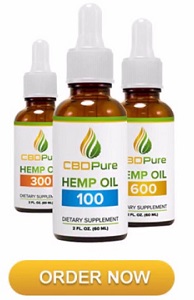What’s that light green powder substance you’ve got there and what does it do? Many people are wondering what the big difference between Matcha (ceremonial green tea) and kratom.
In this article, that’s exactly what we’re going to be talking about.
When it comes down to it, there are probably more differences than similarities.
But like with coffee which is also somewhat related to both plants (kratom and matcha), it may be an excellent choice to blend into your daily dosage of kratom.
What Is Kratom?
Like green and black tea, coffee has its origins in Asia. It is a member of the Rubiaceae family, so it comes from the same botanical family as the coffee shrub.
Several alkaloids, flavonoids and other compounds found in kratom are either psychoactive or have some nutritional benefit, however.
The kratom plant has been used in Southeast Asia as folk medicine and means to help power through long workdays for many centuries.
Unlike green tea and black tea, it has only recently been discovered by the West but is growing in popularity.
Kratom’s effects depend on a variety of factors including the vein color and region it was grown in. As a result, different varieties of kratom may have vastly different effects.
Differences Between Matcha And Kratom
Apart from both being green powdered substances, matcha and kratom have little in common.
Kratom is more euphoric than your average tea and provides even more of a “buzz” than your morning shot of coffee.
Though the use of Matcha green tea can be responsible for a mood lift, it’s likely not as effective at mood regulation as green Malay kratom, for instance.
The active ingredients are also entirely different. In kratom, the two most important compounds are mitragynine and 7-hydroxy-mitragynine though other compounds are also crucial to the effects.
In Matcha, l-theanine and caffeine are the two most important active ingredients.
A couple of servings a day of Matcha will be around 1-2 grams or about a teaspoon or so altogether.
5 or 6 cups of Matcha per day is the maximum. These cups of Matcha will contain around 150mg of caffeine and 120-240mg of l-theanine.
Meanwhile, a serving of kratom for beginners might be 0.5 to 2g.
But, depending on tolerance and what the person is taking it for some may dose as much as 3-5g per dosage.
Many people dose kratom 1-3 times a day. In both cases, taking too much could result in an upset stomach or even regurgitation.
Matcha is less likely to cause tolerance buildup and withdrawal since it contains less caffeine than coffee.
Kratom’s potential for withdrawal and tolerance buildup is comparable to coffee according to addiction expert, Dr. Jack Henningfield.
Another difference between kratom and matcha is the cost.
An ounce of ceremonial grade Matcha costs around $20 per ounce. A single ounce of kratom may cost between $5 and $15 generally.
This is another reason the rumors that Matcha is used as a filler for kratom are unlikely.
Kratom And Matcha Synergy
Kratom mixes well with various other things. Some people find a cup of coffee either enhances the analgesic effects or adds to the energy boost.
In the case of more sedating strains, may counteract the sleepy feeling that accompanies dosing.
Caffeine may enhance the opioid receptor binding of kratom as well.
Some people also enjoy using other herbal teas like yerba mate, guayusa, green tea or Matcha, ceremonial grade green tea.
L-theanine blends well with caffeine. The l-theanine may balance the possible jittery feeling of the caffeine.
For people who are taking energetic strains like a white vein or Maeng da, the l-theanine in Matcha may remove any discomfort from the stimulation.
L-theanine can be anxiolytic and slightly sedating. So, when combined with red veins it can cause the kratom combo even more calming.
Some users at Reddit have also mentioned using coconut oil and green tea as a means to enhance kratom.
Using coffee, black or green tea or Matcha alongside kratom seems to be a fairly popular combination.
Some have even suggested making kratom and green tea smoothies.
Likely it won’t be as dramatic a potentiator as an MAO inhibitor or something like black pepper extract, turmeric and curcumin.
There are several anecdotal examples of people explaining their positive experiences mixing Matcha and kratom.
Kratom and Matcha may both be useful for lowering blood pressure (no scientific evidence).
L-theanine, the popular supplement found in green tea and higher doses in Matcha can also lower blood pressure.
Kratom contains several antioxidant ingredients as well.
According to a study in the Asian Pacific Journal of Cancer Prevention, pain relief is just the tip of the iceberg. The study touts kratom’s antioxidant, anticancer, and chemo-preventative potential.
Though l-theanine and caffeine are likely the two leading causes for kratom synergy — the journal “Current Pharmaceutical Design” points out that several phytochemicals found in green tea have an effect on mood and cognition.
Recently, a special green tea and matcha tea rapidly gaining popularity throughout the world — referred to as a mood and brain food.
Matcha tea consumption leads to a much higher intake of green tea phytochemicals compared to regular green tea.
Previous research on tea constituent’s caffeine, L-theanine, and epigallocatechin gallate (EGCG) repeatedly demonstrated benefits on mood and cognitive performance.
These effects were observed when these phytochemicals were consumed separately and in combination.”
Confusion Over Kratom And Matcha
There is some confusion over the differences between kratom and matcha powder.
Both are bitter, green powders that often brewed into a tea.
But, apart from that, there are few similarities. There are rumors related to Matcha being used as filler for kratom powder. This is unlikely as high-grade Matcha powder is actually more expensive.
Though they may mix well, there isn’t much connection between Matcha grade green tea and kratom.
Epicatechins like EGCG and ECG which can be found in chocolate and tea show up in kratom.
Using kratom alongside Matcha may increase the antioxidant potency of your tea blend.
Some studies show kratom is antimicrobial, antibacterial, antioxidant, and even immuno-stimulant.
Combining kratom with matcha could be the right choice if you’re primarily supplementing for nutritional value.
If you’re looking for a calming effect, a combination of kratom with Matcha may also be a good choice.
Another reason for some confusion is the fact that kratom is referred to as a tea and often designated by the vein color.
Green strains of kratom have the most antioxidants. Some call kratom a tea or refer to it as such.
That said, green kratom tea is not derived from Camellia sinensis, so it’s not technically “green tea” much less Matcha grade green tea.
Some vendors may ship kratom under the name “green tea” to get around potential customs holds, but once again this doesn’t make kratom any more related to Matcha.
Kratom Disinfo Abounds
An article from Fox News “tea labeled ‘green tea and kratom’ is quite popular and sold in most stores around his campus.”
From here on the article spreads some misinformation about kratom’s supposed danger.
In all my experience, I’ve never seen kratom labeled as “green tea.” That said, if you find green tea for sale, don’t expect it to contain any kratom in it!
Unlike Matcha, kratom has been demonized in the press in the last few years.
False claims and what former pharmacologist of the National Institute of Drug Abuse, Dr. Jack Henningfield calls “junk science” inform much of the mainstream kratom coverage.
A similar situation occurred a couple of decades ago with another tea shrub. Rumors eventually debunked regarding the kava plant causing organ failure.
There is a wealth of information about the benefits of kratom from scientific journals, researchers, and medical professionals.
A recent letter published in the New England Journal of Medicine points out how claims of kratom-related deaths out of Colorado were likely due to other pharmaceuticals rather than the kratom leaf powder itself.
Always make sure to check and double-check the information about any supplement you are considering.
Always clear any new exercise regimen, herbal compound, or diet, any severe change in your health regimen with your care practitioner.
This is especially important if you are currently under the care of a doctor for any pre-existing condition or if you take any over-the-counter or prescription medications.















